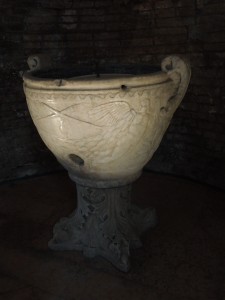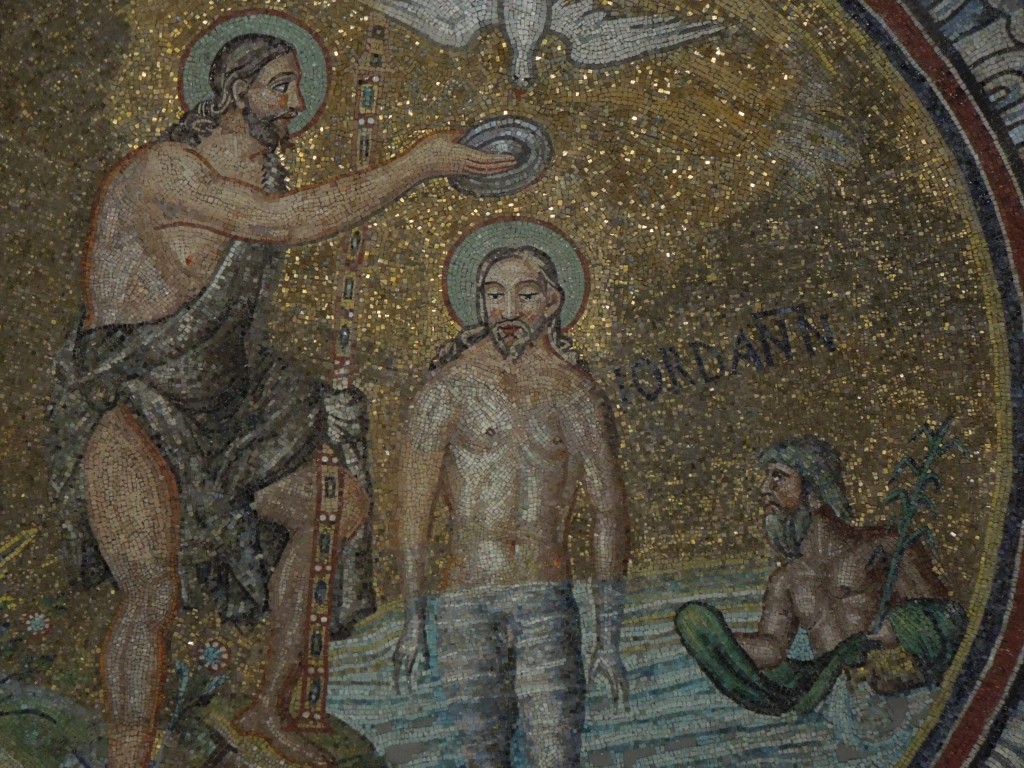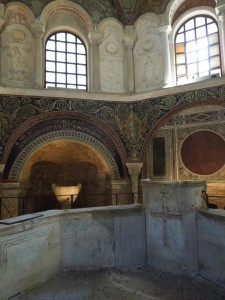
Container used for pagan purificaiton rites
Water immersion
It’s well-known how much religions have in common and how often they replicate each other, but a visit to Ravenna brought home to me how central the notion of purification by water has been in differing cultures.
Brought up in the Anglican tradition, I’ve been accustomed to think of baptism as splashing babies with drops of water. Ravenna’s churches, though, with origins as far back as the fifth century, have large stone baths for carrying out the ritual. This is more serious stuff than a symbolic sprinkling.
The Baptistry Neoniano is a church built in the early fifth century on the site of Roman baths, from which it takes its decorative theme with pillars and portraits of Romans in tunics. At its centre is a large round baptismal bath, and on the dome above a painting of Christ standing up to his middle in the River Jordan with John the Baptist pouring water over him.
Two things struck me about the Baptistry. One was that proudly on display was a large marble container, which according to the accompanying sign ‘probably was used for the purification in pagan nuptials’. (See picture above.) Here was a striking example of the way that the Church appropriated pagan elements for its own use.
The second feature concerned the painting on the dome. Not only was Jesus openly displaying his human aspect, so to speak, but to his left was an eerie figure described by an explanatory notice as ‘the personification of the River Jordan’. Isn’t that similar in concept to a Shinto kami?
The artist’s conception seemed to be that immersion in the cold and life-giving waters involved an encounter with the spirit of nature… Suddenly I had a revelation: Behold ‘misogi’ in Biblical garb!!

Dome painting of Jesus being baptised by John the Baptist, with the personification of the River Jordan emerging from the waters


Leave a Reply